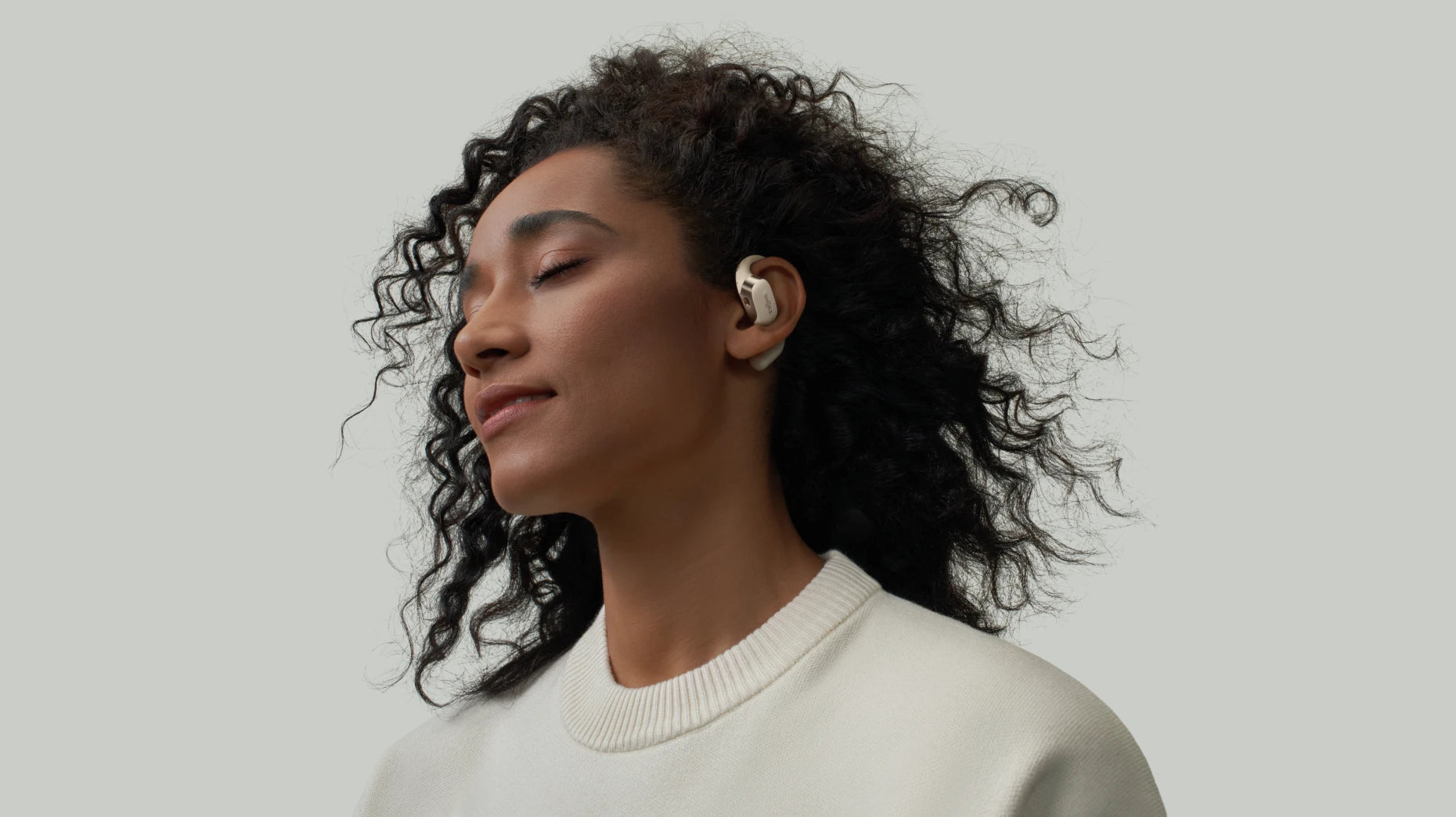How Do Noise Cancelling Headphones Work?
Noise canceling headphones and earbuds can make it much easier to handle loud environments such as on a noisy airplane. They provide a break from the chaos around you, making it easier to focus or fall asleep. When you need to get something done, they're an easy solution.
Types of Noise Cancellation
Active Noise Cancellation (ANC)
Active noise canceling (ANC) earbuds generally have three different microphones:
-
Feedback ANC System – This is the active noise-canceling chipset. It is placed on your device's internal boards.
-
Feed Forward ANC System – This chipset is placed on your device's external boards.
-
Hybrid ANC System – This combines the Feed Forward and Feedback systems.
Note: The Hybrid ANC System typically belongs to Bluetooth devices with a higher resolution, along with big headphones. By using the Hybrid ANC System, it's possible to achieve noise-canceling technology of up to 90 percent. If you go jogging while wearing earbuds with a Hybrid ANC System, it's possible to have a car drive past you and not even notice it!
Phase Inversion Explained
Phase inversion is the core of ANC technology. ANC earbuds use phase inversion to delay one of the two sound wavelengths that come your way. This delay lasts about half a second and is responsible for muting background noises and improving the audio sounds in your ears. This is known as "out of phase," as opposed to "in-phase," which is used in non-noise-canceling headphones.
The ANC relies upon its small set of microphones to find and cancel background noises. While this technology isn't perfect, and some background noises will still slip in, it provides a much nicer listening environment.
Important: ANC generally requires music or sound playing to be most effective. Some earbuds can switch between ANC mode and non-ANC mode, allowing you to hear your surroundings when necessary.
Passive Noise Blocking
Noise-blocking technology is a low-tech solution that provides a good first line of defense. It relies upon a snug fit, which naturally filters out some background noise. There are no electronic components, making it a passive system.
- Passive noise blocking is more effective at reducing high-frequency sounds, such as people talking or a baby crying.
- ANC is most effective at reducing low-frequency sounds, such as airplane engines, air conditioners, or drones.
| Feature |
Passive Noise Blocking |
Active Noise Cancelling (ANC) |
| Technology |
Passive |
Active |
| Power needed |
No |
Yes (battery) |
| Best for |
High-frequency noise |
Low-frequency noise |
| Example |
Snug-fit earbuds |
ANC headphones |
Where Noise Canceling Works Best
Noise-canceling headphones are valuable in any environment where external noise disrupts concentration or relaxation:
- Airplanes
- Public transportation (buses, trains, subways)
- Offices with chatty coworkers
- Coffee shops
- Gyms
- Libraries or shared study spaces
For outdoor sports like running or cycling, Hybrid ANC earbuds can help reduce traffic noise while keeping you safe and aware of your surroundings.
ANC Limitations and Safety Tips
- ANC works best with constant low-frequency noises. Sudden high-frequency sounds, like car horns or people talking, may still be audible.
- The effectiveness of ANC varies depending on headphone quality and fit.
- Use ANC headphones at 70–85dB volume and take breaks every 30 minutes to avoid hearing damage or ear canal pressure.
- Do not cover the microphones; interference from mobile devices may reduce ANC performance.
- Do not rely on ANC while driving, as being aware of traffic sounds is essential.
Best Alternatives to Noise-Canceling Headphones
Traditional over-ear or in-ear headphones, even those with active noise cancellation, can sometimes cause discomfort. Earbuds may slip out during exercise, and over-ear models can create pressure on the ears or head after prolonged use. Some people also experience ear canal fatigue, heat buildup, or a tight fit that makes listening for long periods less enjoyable.
For those seeking a more comfortable listening experience, Shokz open-ear headphones offer great alternatives. Shokz open ear headphones sit lightly and securely around the ears, allowing your ears to stay free while still delivering clear, high-quality audio without sound leakage. The design ensures stable fit during movement and long-term comfort, making them ideal for workouts, commuting, or casual listening.
Shokz offers headphones such as OpenDots ONE clip on earbuds and OpenFit 2+ fitness earbuds, which combine lightweight construction, a secure fit, open-ear comfort, and excellent sound quality. They stay in place during activity, provide clear, well-balanced audio, and allow you to remain aware of your surroundings without sacrificing listening pleasure.
FAQs about How Do Noise Cancelling Headphones Work
Q1. Can you still hear everything with noise-cancelling headphones?
A1. Noise-cancelling headphones, especially those with active noise cancellation (ANC), work best at reducing low-frequency sounds like airplane engines or air conditioners. However, sudden or high-frequency noises—like a car horn or someone speaking—may still be audible. Passive noise blocking from the earcups helps reduce some of these sounds, but you may not be completely isolated from all external noise.
Q2. Do noise-cancelling headphones work without music?
A2. ANC generally requires some sound to operate optimally. While headphones can still block some low-frequency ambient noise without music playing, the masking effect works best when music or other audio is playing. Some earbuds can switch between ANC mode and non-ANC mode, allowing you to hear your surroundings when necessary.
Q3. What are the downsides of noise cancelling?
A3. Noise-cancelling headphones can cause ear canal pressure, discomfort, or fatigue during long listening sessions. They are most effective at low-frequency noises and may not block high-frequency sounds entirely. Using them at high volume or for extended periods can also pose a risk of hearing damage. Additionally, ANC may not work perfectly in very quiet environments, and covering or interfering with the microphones can reduce effectiveness.
Conclusion
ANC noise-canceling headphones provide a serene listening experience, but they can put pressure on ear canals and are most effective with low-frequency noises. Passive noise blocking and bone conduction headphones offer alternatives for comfort, safety, and high-quality audio. Shokz delivers the best in bone conduction technology for active and everyday users.








